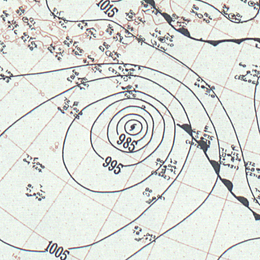HD 179791
HD 179791| 관측 데이터 에폭 J2000 이쿼녹스 J2000 | |
|---|---|
| 별자리 | 아퀼라 |
| 우측 상승 | 19h 13m 44.03146s[1] |
| 탈위임 | +05° 30′ 56.1725″[1] |
| 겉보기 크기 (V) | 6.48[2] |
| 특성. | |
| 진화 단계 | 주계열[3] |
| 스펙트럼형 | A3 V[4] |
| U-B색지수 | +0.10[2] |
| B-V색지수 | +0.09[2] |
| 변수형 | 의심스러운[5] |
| 아스트로메트리 | |
| 방사 속도 (Rv) | +16.2km[6]/s |
| 고유 운동 (μ) | RA: +6.819마스[1]/yr Dec.: −9.809[1]mas/yr |
| 시차 (π) | 5.2966 ± 0.0569[1] 마스 |
| 거리 | 616 ± 7 ly (102 ± 2 pc) |
| 절대치수 (MV) | 0.66[7] |
| 세부 사항 | |
| 미사 | 2.55±0.15[3] M☉ |
| 반지름 | 2.5[8] R☉ |
| 루미도 | 65.8+21.0 −16.0[3] L☉ |
| 온도 | 8912+166 −162[3] K |
| 회전 속도 (v sin i) | 196km[3]/s |
| 기타 지정 | |
| 데이터베이스 참조 | |
| 심바드 | 자료 |
HD 179791은 적도 별자리 아퀼라에서 변광성이[5] 의심된다.시야가 좋은 상황에서도 육안으로 보는 것이 도전인데, 겉으로 보이는 시각 크기는 6.48이다.[2]HD 179791까지의 거리는 연간 시차 변화량 5.3 mas로 추정할 수 있으며,[1] 이는 616광년의 값을 산출한다.그것은 지구로부터 +16 km/s의 태양 중심 방사상 속도로 더 멀리 이동하고 있다.[6]별의 점성 측정은 그것이 가까운 이항계통의 구성원이라는 것을 나타낼 수 있는 움직임의 변화를 보여준다.[10]
A형 주계열성으로 A3 V의 별 분류가 잘 되어 있다.[4]화학적으로 특이한 것으로 의심되는 스타로, 이전에 후보였던 람다 보외티스 스타였다.[11]람다 보외티스 스타로서의 위상은 2015년에 검토되어 비회원으로 변경되었다.[12]196km/s의 예상 회전 속도로 빠르게 회전하고 있다.[3]이 별은 태양의 2.55배[3], 태양의 반지름의 약[8] 2.5배의 질량을 가지고 있다.그것은 광권으로부터 태양 광도의 66배에[3] 달하는 광도를 8,912K의 유효 온도로 방출하고 있다.[3]
참조
- ^ a b c d e f Brown, A. G. A.; et al. (Gaia collaboration) (August 2018). "Gaia Data Release 2: Summary of the contents and survey properties". Astronomy & Astrophysics. 616. A1. arXiv:1804.09365. Bibcode:2018A&A...616A...1G. doi:10.1051/0004-6361/201833051.
- ^ a b c d Cousins, A. W. J. (1965), "Photometric Data for Stars in the Equatorial Zone (Eighth List)", Monthly Notes of the Astronomical Society of Southern Africa, 24: 120, Bibcode:1965MNSSA..24..120C.
- ^ a b c d e f g h i Zorec, J.; Royer, F. (2012), "Rotational velocities of A-type stars. IV. Evolution of rotational velocities", Astronomy & Astrophysics, 537: A120, arXiv:1201.2052, Bibcode:2012A&A...537A.120Z, doi:10.1051/0004-6361/201117691, S2CID 55586789.
- ^ a b Cowley, A.; et al. (April 1969), "A study of the bright A stars. I. A catalogue of spectral classifications", Astronomical Journal, 74: 375–406, Bibcode:1969AJ.....74..375C, doi:10.1086/110819.
- ^ a b Samus, N. N.; et al. (2017), "General Catalogue of Variable Stars", Astronomy Reports, GCVS 5.1, 61 (1): 80–88, Bibcode:2017ARep...61...80S, doi:10.1134/S1063772917010085, S2CID 125853869.
- ^ a b Gontcharov, G. A. (November 2006), "Pulkovo Compilation of Radial Velocities for 35 495 Hipparcos stars in a common system", Astronomy Letters, 32 (11): 759–771, arXiv:1606.08053, Bibcode:2006AstL...32..759G, doi:10.1134/S1063773706110065, S2CID 119231169.
- ^ Anderson, E.; Francis, Ch. (2012), "XHIP: An extended hipparcos compilation", Astronomy Letters, 38 (5): 331, arXiv:1108.4971, Bibcode:2012AstL...38..331A, doi:10.1134/S1063773712050015, S2CID 119257644.
- ^ a b Pasinetti Fracassini, L. E.; et al. (February 2001), "Catalogue of Apparent Diameters and Absolute Radii of Stars (CADARS)", Astronomy and Astrophysics (Third ed.), 367: 521–524, arXiv:astro-ph/0012289, Bibcode:2001A&A...367..521P, doi:10.1051/0004-6361:20000451, S2CID 425754.
- ^ "HD 179791". SIMBAD. Centre de données astronomiques de Strasbourg. Retrieved November 6, 2018.
- ^ Mason, Brian D.; Martin, Christian; Hartkopf, William I.; Barry, Donald J.; Germain, Marvin E.; Douglass, Geoffrey G.; Worley, Charles E.; Wycoff, Gary L.; Ten Brummelaar, Theo; Franz, Otto G. (1999), "Speckle Interferometry of New and Problem HIPPARCOS Binaries", The Astronomical Journal, 117 (4): 1890, Bibcode:1999AJ....117.1890M, doi:10.1086/300823
- ^ Renson, P.; Manfroid, J. (May 2009), "Catalogue of Ap, HgMn and Am stars", Astronomy and Astrophysics, 498 (3): 961–966, Bibcode:2009A&A...498..961R, doi:10.1051/0004-6361/200810788.
- ^ Cheng, Kwang-Ping; et al. (January 2017), "Utilizing Synthetic Visible Spectra to Explore the Physical Basis for the Classification of Lambda Boötis Stars", The Astronomical Journal, 153 (1): 15, Bibcode:2017AJ....153...39C, doi:10.3847/1538-3881/153/1/39, 39.

